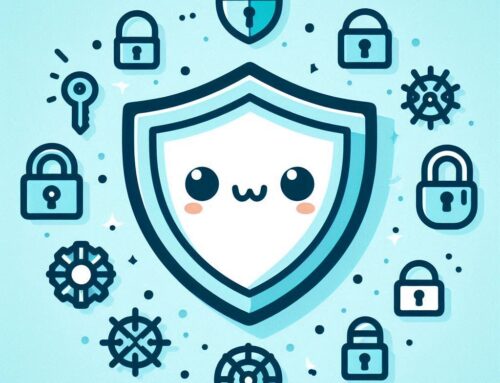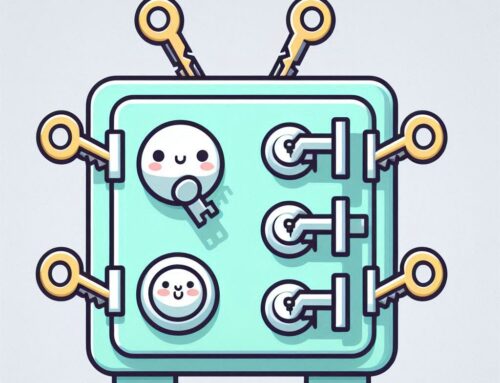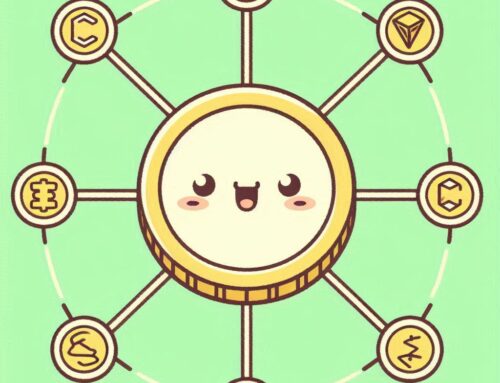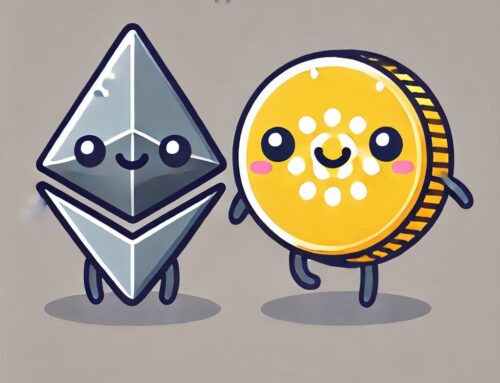Blockchain Technology: It’s Not Just for Geeks Anymore (But They’re Welcome Too!)
Alright, buckle up buttercups, because we’re about to talk about blockchain technology! No, it’s not some kind of alien code or a secret society handshake (though, let’s be honest, it kind of sounds like it). It’s actually a pretty ingenious idea that’s been causing quite a stir in the world, and you don’t need a PhD in rocket science or advanced calculus to understand it. Think of it as a supercharged, extra-secure, see-through spreadsheet on steroids, one that everyone can peek at, but nobody can mess with. Intrigued? Confused? Maybe a little both? Perfect, you’re in the right place! Let’s dive in and demystify this amazing blockchain technology!
What in the Digital World is a Blockchain, Anyway?
So, what exactly is this magical “blockchain” thing that your tech-savvy neighbor is constantly blathering on about? In the simplest terms, a blockchain is a digital ledger, a record book, if you will. But instead of being kept in a dusty old library, this ledger is spread out across countless computers around the globe. It’s like a shared Google Doc, but one that’s virtually hack-proof and transparent. Imagine a group of friends who keep a running tab of who owes who money. Instead of one person holding the ledger, everyone has a copy, and when someone makes a change (like “Alice paid back Bob 5 bucks”), everyone sees it.
The Building Blocks of a Blockchain: It’s Not Just Random Jargon
Let’s break it down into its core parts, because even the most intimidating things become less scary once you understand their components:
Blocks: Imagine each block as a page in your ledger. Each page is jam-packed with a list of transactions, like “Alice sent Bob 5 coins”, “Carol sold Dave a digital banana”, or “Your neighbor’s cat, Mr. Pudgy, just bought a virtual yacht”; the possibilities are endless! These pages (blocks) are linked together chronologically. Each block is also secured with cryptography, which makes it virtually impossible to alter or tamper with.
Chains: Now, these blocks aren’t just floating around like lost balloons. They are chained together in a specific order, forming a chain (hence, “blockchain”). This chronological chain of blocks is what makes the system so secure. If someone tries to sneakily change a transaction in one block, they’d have to change all the following blocks too; a task so incredibly complicated and resource-intensive, it’s practically impossible (like trying to find a matching pair of socks in a mountain of laundry, after you’ve sworn you’ll just buy new socks next time). This creates an immutable record.
Cryptography: This is just a fancy word for secret code, and it’s not as scary as it sounds. Cryptography ensures that the transactions and blocks are secure and that nobody can alter them without anyone else noticing. Think of it as a super-strong lock on each page of the ledger, protecting it from sneaky edits. It uses complex mathematical equations to encode the data, making it extremely difficult to decipher without the proper keys. This is a critical component of the blockchain technology and ensures its security.
How Does This Blockchain Technology Actually Work? Let’s Get Practical
Okay, so we have blocks, chains, and some secret code. But how does all this actually work in practice? It’s like understanding the components of a car, but also needing to know how to drive! Let’s use a simple example to understand how blockchain technology functions:
Transaction Request: Let’s say Alice wants to send some digital coins to Bob (because, let’s be honest, Bob probably needs them). She initiates a transaction, which is basically a new entry into our ledger, like “Alice is sending Bob 5 digital coins”.
Transaction Broadcast: This request is then broadcast to the network, meaning all (or at least, a whole lot of) the computers on the network see this pending transaction. It’s like shouting your request to all your friends, ensuring everyone is aware of what’s happening.
Transaction Validation: The network uses some fancy algorithms (don’t worry, you don’t need to understand the algorithms to use the blockchain) to verify that Alice actually has those coins to send, and that the transaction is legit. This is where the “consensus mechanism” comes into play. It’s like a vote among the computers to agree that everything is correct, kind of like a digital jury ensuring fair practice.
Block Creation: Once the transaction is verified, it gets bundled up with other verified transactions, and is added to a new block. It’s like putting all the completed tasks on a to-do list into a new folder for the day. This new block is then added to the ever growing chain.
Chain Update: All the computers on the network then update their copy of the ledger with this new block, so everyone now has a record of Alice sending those digital coins to Bob. It’s like having all the members of your friend group update their spreadsheet with the new information.
And just like that, the transaction is officially recorded on the blockchain. It’s permanent, transparent, and virtually impossible to alter. This whole process might seem a bit complicated, but it happens incredibly fast. You don’t need to be a computer whiz to use blockchain technology; it all happens automatically behind the scenes.
What Makes Blockchain Technology So Special? It’s More Than Just Hype!
Now, you might be thinking, “Okay, so it’s just a secure spreadsheet. Big deal!” Well, it’s kind of a big deal. Actually, it’s a pretty massive deal. Here’s why:
Decentralization: Unlike traditional ledgers kept by a single bank or company, a blockchain is distributed across countless computers. This means there’s no single point of failure or control, which makes it incredibly resilient and secure. It’s like having a hundred backup copies of a file, instead of just one, which prevents a single failure from causing a catastrophic event. Blockchain technology is the epitome of decentralized systems.
Transparency: All transactions on a blockchain are publicly visible, though the identities of the participants are often obscured (for privacy reasons!). This means that you can see the flow of information or assets without knowing exactly who’s behind it. This transparency helps ensure accountability, as anyone can see what’s happening on the blockchain. This openness and visibility is at the core of blockchain technology.
Security: Thanks to cryptography and the distributed nature of the ledger, it’s incredibly difficult for anyone to tamper with the data. Any attempt to change a record would require changing it on a majority of the computers at the same time, which is practically impossible, given the vast scale of most blockchains. This incredible security is one of the major advantages of blockchain technology over traditional systems.
Immutability: Once a transaction is recorded on the blockchain, it cannot be altered or deleted. This makes it great for things where you need a permanent record. It’s like having a digital notary that never forgets, and never makes mistakes. This feature of blockchain technology provides a high level of trust and reliability.
Real-World Examples: Blockchain Technology Beyond the Bitcoin Bubble
While blockchain technology is often associated with cryptocurrencies like Bitcoin, it has far more applications than just digital money. It’s like having a Swiss Army knife for the digital age. Here are a few examples:
Supply Chain Management: Tracking goods as they move from the factory to your doorstep. You can see exactly where your coffee beans were grown, processed, and roasted, ensuring it’s ethically sourced. This makes supply chains more transparent, reliable, and efficient, showcasing a practical implementation of blockchain technology.
Healthcare: Storing medical records securely and transparently, allowing patients to have greater control over their health information. This enhances patient data privacy, while also allowing for better accessibility to medical records, using blockchain technology.
Voting Systems: Creating a more secure and transparent way to cast votes, reducing the risk of fraud and manipulation, as the system becomes more verifiable and open to everyone. This real-world example showcases another important potential of blockchain technology.
Digital Identity: Verifying identities online in a more secure and reliable way, reducing the risk of identity theft and ensuring that online identities are legitimate. This adds a layer of trust in the digital sphere through blockchain technology.
Intellectual Property: Tracking and securing the ownership of digital assets, such as music, art, and patents, ensuring that creators are rewarded and protected, by using the tamper-proof capabilities of blockchain technology.
The potential applications for blockchain technology are practically endless, which is why it’s generating so much buzz. It’s like discovering a new and incredibly versatile tool, and we’re just starting to scratch the surface of what’s possible!
The Takeaway: Blockchain Technology is Here to Stay!
So, blockchain technology is basically a shared, secure, and transparent digital record book, which is far more useful than just a regular spreadsheet. It’s not as complex as it sounds, and its applications go way beyond just cryptocurrencies. From supply chains to voting systems, blockchain technology has the potential to revolutionize how we do business and interact with each other. It’s like that one amazing invention that, once you get the hang of it, you wonder how you ever lived without. And the best part? It’s just getting started, so buckle up and get ready for a fascinating journey!





